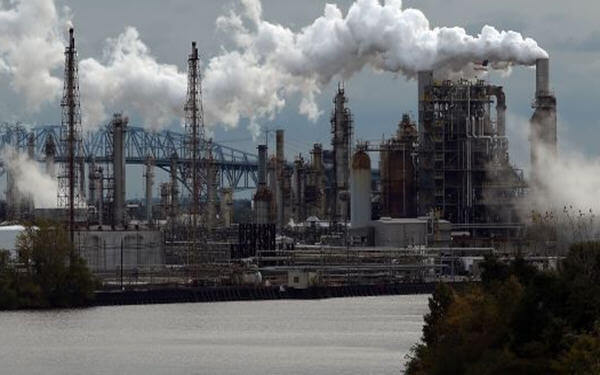
Oil prices rose on Wednesday, with U.S. crude topping $60 a barrel for the first time in about four months, after government data showed the American stockpiles of crude oil and refined fuels plunged last week.
WTI has rallied 32 percent this year after losing nearly half of its value in the final months of 2018. Brent is also up more than 27 percent year to date, boosted by production cuts from OPEC and U.S. sanctions against Iran and Venezuela.
U.S. West Texas Intermediate crude futures settled 80 cents higher at $59.83 per barrel, after earlier topping $60 and hitting its highest level since Nov. 12. The more heavily traded WTI contract for May delivery peaked at $60.28 a barrel.
Brent crude futures rose 89 cents, or 1.3 percent, at $68.50 a barrel. The international benchmark for oil prices rose as high as $68.57, setting a new high going back to Nov. 13.
Crude stockpiles dropped by 9.6 million barrels in the week through March 15, the U.S. Energy Information Administration. That compared with an estimate for a buildup of 309,000 barrels in a Reuters survey of analysts.
Meanwhile gasoline inventories fell by 4.6 million barrels, nearly twice the decline expected in the Reuters poll. Stocks of distillates, including diesel and heating oil, dropped by 4.1 million barrels, almost four times bigger than the expected drawdown.
Overall, the EIA report was “pretty bullish,” with gasoline demand rivaling consumption during peak season, said John Kilduff, founding partner at energy hedge fund Again Capital.
“You’ve got to believe we’re due for a Trump tweet at some point, but I think with demand, these drawdowns, and the refinery snags we’ve been having, it’s kind of a bullish setup,” he said.
President Donald Trump resumed his warnings for OPEC to tamp down oil prices in February, but has since held his fire despite the cost of crude ticking higher over the last month.
Crude futures have drawn support this week from OPEC’s ongoing supply cuts. On Monday, the group canceled a meeting planned for April because it expects the oil market to remain oversupplied through the first half of the year.
The move leaves price-boosting production cuts by OPEC and its partners in place until at least June. The group is aiming to keep 1.2 million barrels per day off the market following the collapse in oil prices last year.
Morgan Stanley believes the output curbs, along with U.S. sanctions, will soon push the market into undersupply and support Brent prices at $75.
“Conversations with several OPEC officials left us with the impression that Brent in the mid-$60s is not where the cartel would like to see it,” the investment bank said in a research note Tuesday.
“We assume that OPEC will extend – or even deepen – production cuts to support the oil market at the next meeting in June.”
Saudi Energy Minister Khalid al-Falih says he is leaning towards continuing the deal into the second half of the year, but Russia is not committing to an extension yet.
Surging U.S. crude production and exports are keeping a lid on prices. The nation’s output is holding steady around an all-time high 12.1 million bpd, while weekly exports hit nearly 3.4 million bpd, just below a recent record, EIA said.
Earlier on Wednesday, crude futures retreated from four-month highs struck in the previous session on concerns about the global economy.
Asian business confidence held near three-year lows in the first quarter as a U.S.-China trade dispute dragged on, pulling down a global economy that is already on a downward path, a Thomson Reuters/INSEAD survey found on Wednesday.
The oil market rallied into Wednesday’s settlement along with equities after the U.S. Federal Reserve left interest rates unchanged and indicated it would not raise rates again this year.
Source: CNBC